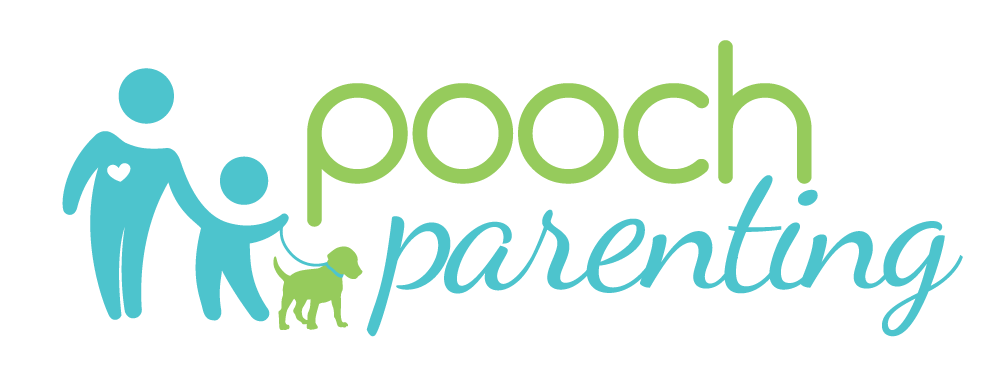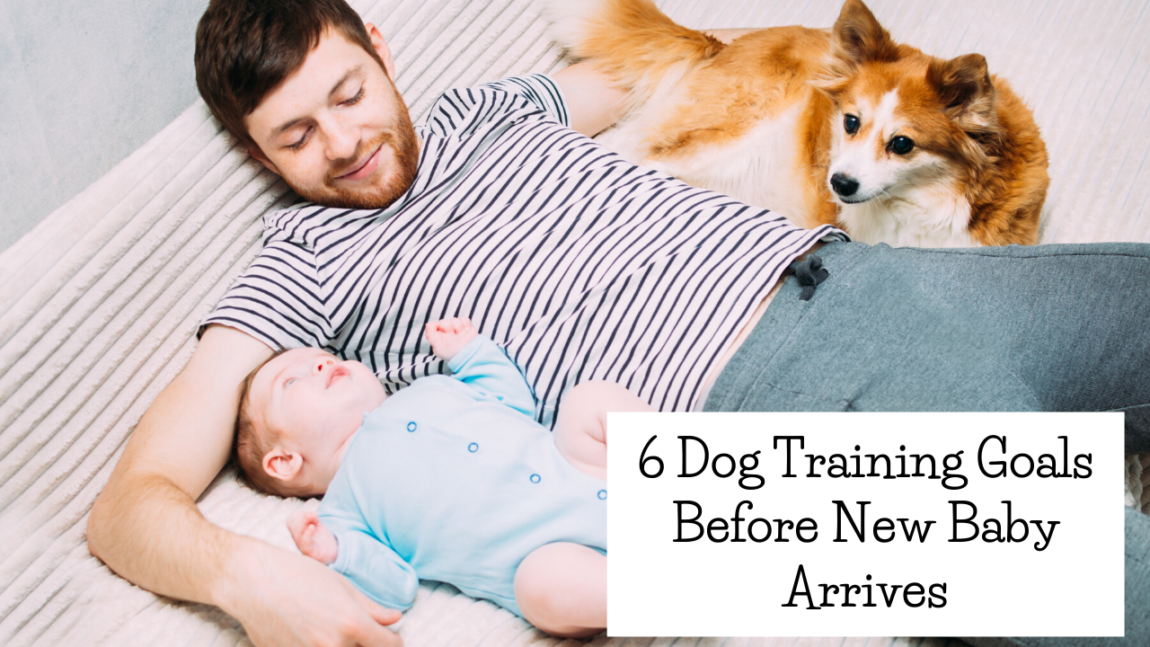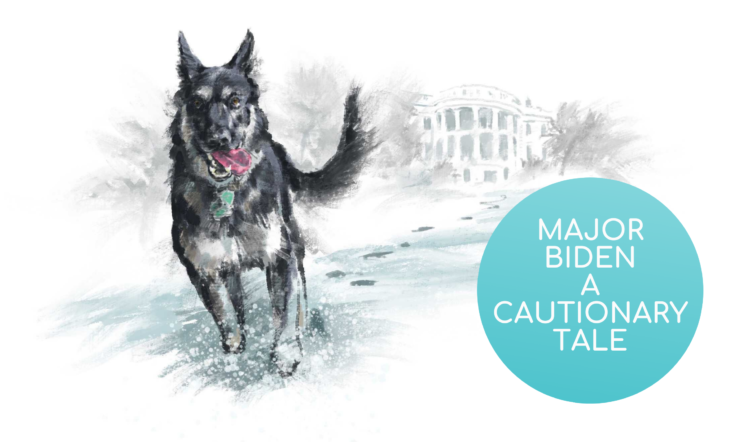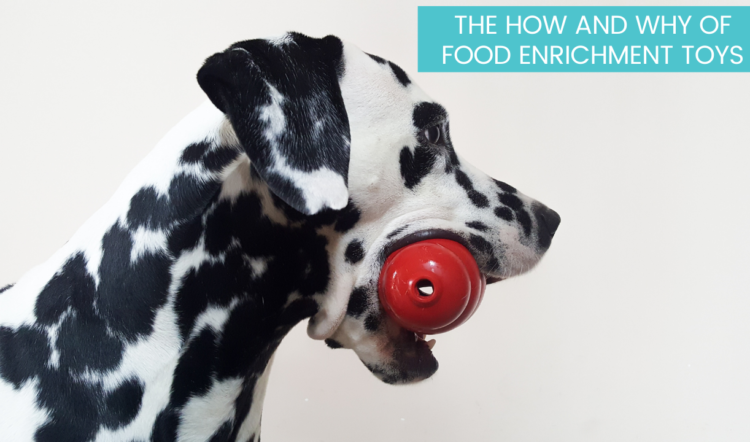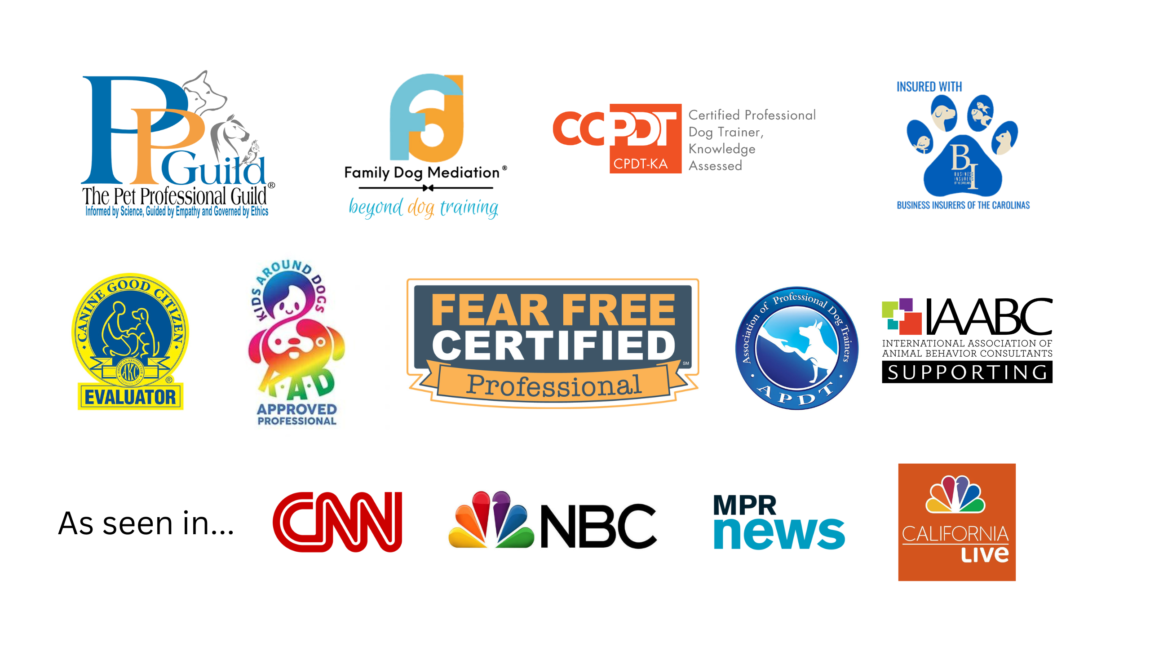Congratulations! Your family is growing. Regardless of whether you are pregnant, adopting, or even fostering, there’s no better time than the present to get a handle on your dog’s naughty antics. Taking the time to prepare your dog before baby arrives will pay huge dividends later. You’ll be tired and less patient than normal – and you’ll have a new bundle to protect. Having a well mannered pooch will help you through this time of transition, as your family grows.
Here are the top 6 behaviors your dog should know before baby arrives.
Comfort Behind a Barrier
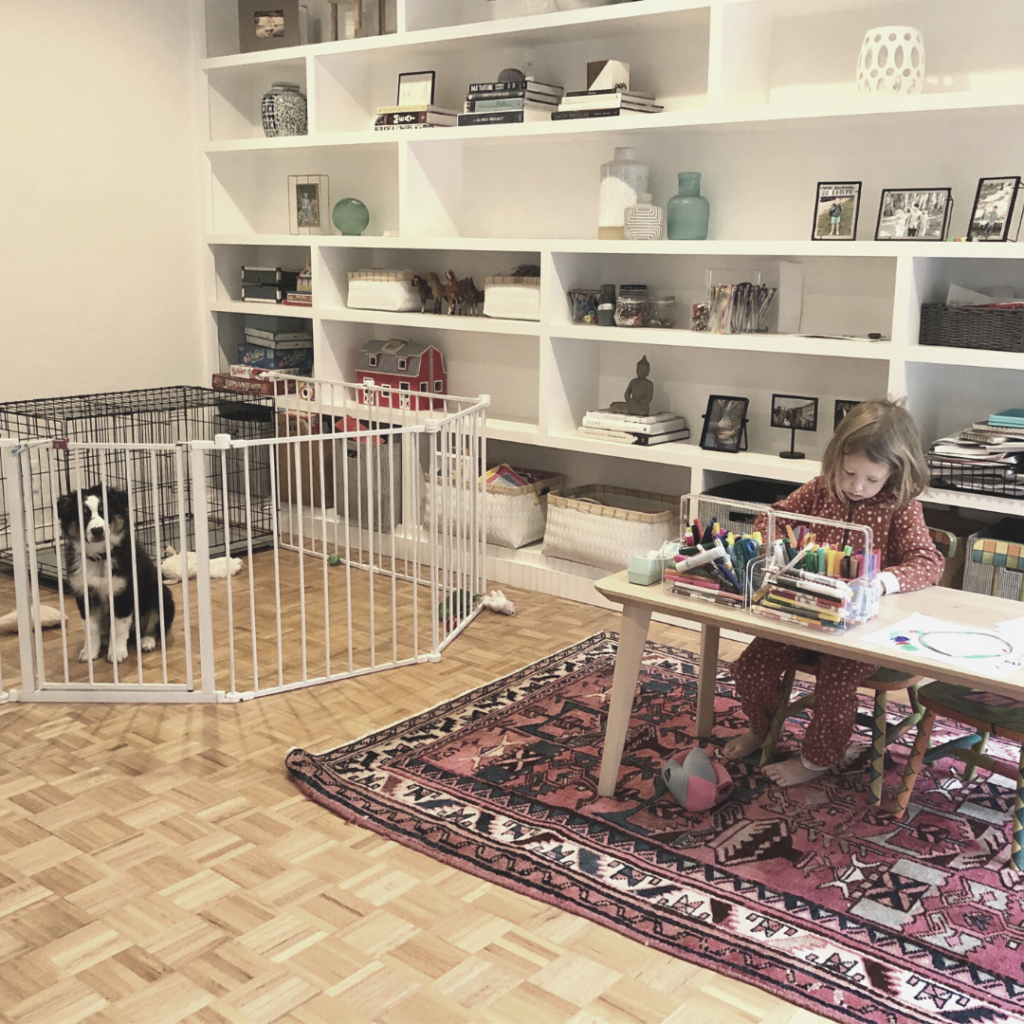
Help your dog to learn to relax behind a barrier. You’ll discover that parenting means that your hands are full most of the time, and that you are nearly always multitasking. Sometimes, for your safety and sanity, your dog will need to be safely stowed behind a baby gate, pen, door or inside a crate. This isn’t mean – it’s practical. The last thing we want is for the pooch to get into something he shouldn’t (hello, poopy diaper!). When you get more training under your belt, barriers may not be necessary, but they are a great backup plan when you can’t pay 100% attention to your dog and baby.
Door Manners
Between family members, friends and delivery drivers, you are likely to have lots of visitors after your baby arrives. Train your dog not to dash through the door or jump on guests. Reward calm behavior when the doorbell rings. While most of us may be used to dogs going crazy when guests come to the door, it IS possible to train your dog to remain calm. I promise. If you don’t think you can do it alone, I can coach you via video.
Relax on a Mat
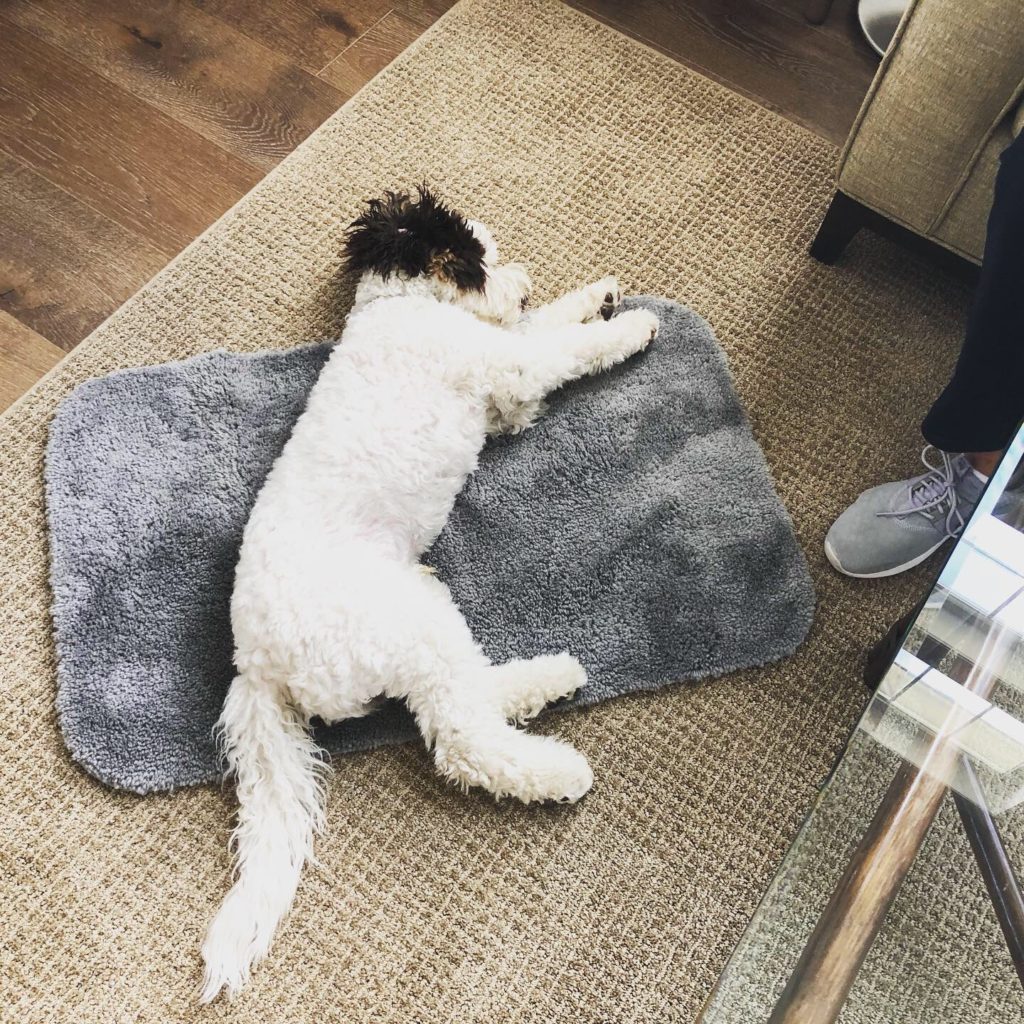
By training your dog to relax on a mat, your dog has a predictable, consistent behavior they can do anywhere the mat appears. This behavior is ideal for diaper changes, bedtime routines and even when you are out on the town. Just stash an extra mat in the trunk of your car, and you will be good to go. Be sure to practice this in every single room of your house before trying it outdoors. Remember – when there are more distractions, behaviors are harder for dogs to master. Practice this every single day, for at least a couple of minutes, like when you have your morning beverage.
Sleeping Logistics
Ideally, you will figure out where your dog will be sleeping well before baby arrives. Your dog can not have any access to your baby while you are asleep – so if you are imagining that you will all sleep together in one giant bed, I hope to encourage an alternative. The problem with this fairy tale scenario is that while you are taking advantage of some much needed sleep, your dog might decide to move, explore, or interact with the baby. Since you are likely to be somewhat unconscious, you won’t be able to intervene if something unsafe were to happen. You might as well not be in the room at all. Want more options?
- Plan B might include the baby sleeping in your bed and your dog on his bed behind a pen.
- Your baby could sleep in her own room behind a closed door (you would use a baby monitor, of course) while dog sleeps in bed with you.
- If the baby sleeps in a bassinet in your room and you want the dog in your room too, then put an x-pen around the bassinet or tether your dog to ensure safety.
Novelty and Distractions
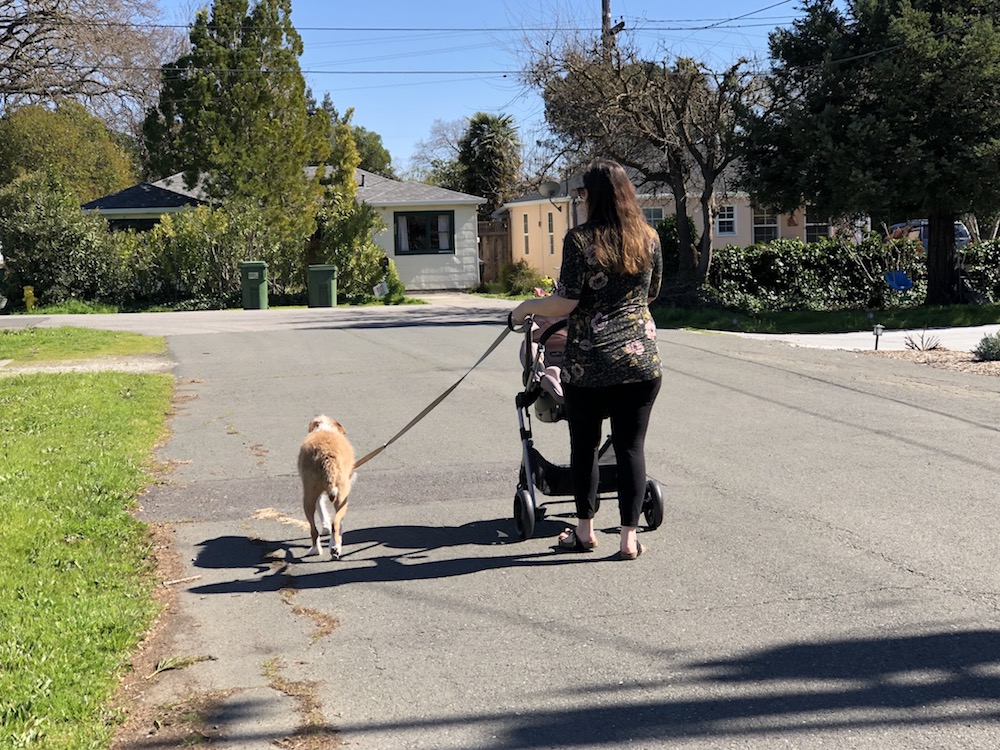
As you unpack items for baby, help your dog to explore without making these items a cause for concern. If your dog is fearful, be sure to start with these new and foreign objects far away. Give your dog treats for looking at these items and then looking back to you. Only when your dog appears relaxed with these items at a distance should you move them closer.
Distractions also make training more difficult. (Look, a squirrel!) Try taking behaviors that you have been practicing, such as laying on a mat, and see if your dog can still do this in your driveway when cars drive past. Or try it near the changing table with a recording of a crying baby in the background (I love the app Pup School for novel sounds).
Practice and Repeat
Does your dog follow basic cues when you try new things, like walk next to the stroller? What if you or your partner puts on a baby carrier? Yes, it’s true – consider it: your shape changes when you wear baby carrying gear. Will your dog listen to cues, such as sit, down, shake, or stay, when you look different than usual? Go ahead – unpack the baby carrier that’s sitting in its box and give it a try! Stuff it with some pillows to make your shape truly change. What if you are carrying the laundry basket or bags of groceries – will your dog follow basic cues, such as “wait” at the door? Practice these things now and practice them often.
You’re Not Alone!
If you want a more thorough prep course on getting your dog ready for baby, I have an online class, ready to take at your own pace. It includes tips on dog training like what’s included here, along with lessons on how to read your dog’s body language, how to develop a safe mindset about parenting dogs and babies, and how to keep everyone safe. Yup. There’s homework too so that everyone in the family can be on the same page. The course is super affordable, and your peace of mind is absolutely worth the price of participation. Learn more about the Preparing Dog for New Baby course and sign up here.
